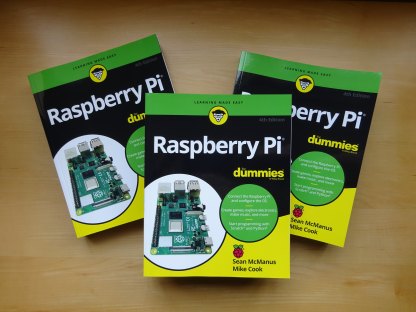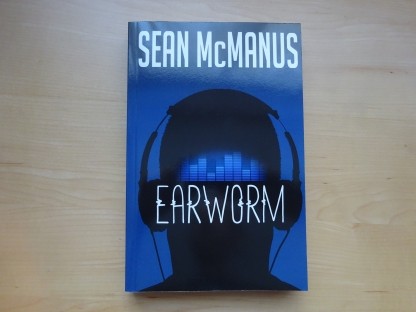
100 Top Tips: Microsoft Excel
Power up your Microsoft Excel skills with this powerful pocket-sized book of tips that will save you time and help you learn more from your spreadsheets.
30 September 2016
ScratchJr is like a younger cousin of Scratch. It's a free app for the iPad or an Android tablet that enables you to experiment with some basic coding. It's designed for younger children than Scratch, so there is not much text in there, and the blocks are simple symbols. If you know Scratch, it won't take long to get started with ScratchJr. But there are quite a few things missing that you might be used to, such as variables, coordinates (go to a particular position), the ability to tell which sprite a sprite is touching, and more. Basically: a lot of the stuff that you use when making games in Scratch! Of course, it's great for younger children because it removes all these things that are hard for them to understand. But for us big kids, the challenge is to come up with some fun games working within what ScratchJr can do.
I previously made a simple game for ScratchJr when it came out, and you can see my first ScratchJr game together with my review here. For Cool Scratch Projects in Easy Steps, I made a game called Super Wheelie. It's a sideways scrolling game, in which you tap your stunt bike to jump over the mushrooms in the road. The game has two levels, and a fun "splash!" sequence when you hit a mushroom and get bounced into the sea. If you get past all the mushrooms, there's a sequence where you roll up to your house. You can see a video of this game below.
As you build this project, you'll learn how you can build games, put your own face into sprites (or "characters" as they are called in ScratchJr), how you can record sound effects and how you can use different scenes for the different levels and sequences. As well as pushing the boundaries a little bit on ScratchJr, it provides a good introduction to the app so that you can start making games of your own, even when you can't get to a computer that runs Scratch.
Like my previous book Scratch Programming in Easy Steps, Cool Scratch Projects in Easy Steps finishes with a handful of short projects you can dive into and tinker with. One of those is another ScratchJr game, called "Baby, I'm a Starfish". In the game you tap a starfish to move it, and have to get it safely to the top of the screen. If it hits another fish or sea creature, it goes back to the bottom. It's a simple but fun (maybe sometimes frustrating!) game. Here's a video. It took me a few goes to get to the top this time, and I did edit out some of the failed attempts!
To find out how to build these projects and get started with coding on your tablet in ScratchJr, check out Cool Scratch Projects in Easy Steps. It's available at Amazon (UK), Amazon (US), and from the publisher. You can also support your local book shop by ordering it there. Just tell them the ISBN is 978-1840787146.
Permanent link for this post | Blog Home | Website Home | Email feedback
28 September 2016
For my new book Cool Scratch Projects in Easy Steps, I thought it would be fun to do something that uses the Raspberry Pi Camera Module. The project I built was a stop motion studio, that enables you to make a film by taking a series of slightly different photos and then playing them back at speed. My Scratch stop motion project has the ability to edit the film by inserting or removing frames and to add speech bubbles. That means you don't have to get the shooting right first time, and you can add a story.
If you've seen Morph or Shaun the Sheep on the telly, you're familiar with how great the end results can be. So, ahem! By way of contrast, here's my film! I think the motion and expressions work quite well, but I hurried the middle bit where (spoiler alert!) the apple starts disappearing, and it might have been better to use an object that could have legs and walk rather than shuffle. But the nice thing is that you can personify pretty much anything by giving it a face and making it move, as this film shows. I'm excited to see what readers can make using this project!
Find out more about the book here. I believe it's being stocked in WH Smiths, and it can be ordered at any book shop. You can also order online from Amazon, the publisher and other outlets here.
Permanent link for this post | Blog Home | Website Home | Email feedback
16 September 2016
Whenever we're on holiday, if there's a maize maze or a hedge maze nearby, we always take a look. Mazes fascinate me.
So when it came to planning projects for Cool Scratch Projects in Easy Steps, I thought it would be interesting to include some maze games. In my previous book Scratch Programming in Easy Steps, there's a chapter of seven short projects at the end and one of those was a really simple script to enable you to move a dot through a maze without being able to walk through walls. Although it's a short project, it was really popular, so I know many readers share my interest in mazes.
As a result, there are three maze projects in Cool Scratch Projects in Easy Steps. The first is Maze Maker, which will generate a random maze for you based on a grid you provide it. You can save an image of the Stage, and reload it as a sprite or background, so you can use the mazes generated by this project in pretty much any game. This project was an opportunity to show how you can make more complex programs, and it uses a technique I previously used for my Minecraft Maze Maker, which appeared in Raspberry Pi For Dummies and Raspberry Pi Projects. Here's a video of it in action, drawing a brain shaped maze:
Then, there's a game called Circuit Breaker, which uses mazes generated in Maze Maker. In this game, you have to track down as many bugs in the circuit as you can in two minutes. The time pressure makes it quite a tense game, because you often have to move on instinct rather than trying to trace the entire route before moving. As with all the projects in the book, I've included suggestions for how you can expand on them and one of my favourite ideas for customising this game is to award bonus time when you catch a bug. I'm sure you can think of other things you can do with this project. Here's a video of it in action:
The third maze project is a 3D Maze Explorer, which enables you to walk through a maze. You move by turning left or right and then walking forwards or backwards. The arrow in the top left is a compass that points north. The maze can be randomly generated, using the Scratch Maze Maker project, or you can design it yourself. The book shows you how to get the script working with both types of maze. It also shows you how to add collectables (cakes, in fact!) to your hand-designed mazes, and you can adapt the script to add them to random mazes too. Here's a video that shows me playing the game. At times it might be a little bit confusing because you can't see which keys I pressed and I've gone through it quite fast, but the game feels natural when you're playing it. It starts by scanning in one of the random mazes.
Cool Scratch Projects in Easy Steps is hot off the presses and in the shops now! My previous book Scratch Programming in Easy Steps is also available, and the two complement each other nicely, with "Cool" showing you how to build specific cool projects, and "Programming" going into greater depth on how the Scratch programming language works.
Permanent link for this post | Blog Home | Website Home | Email feedback
09 September 2016
In my new book Cool Scratch Projects in Easy Steps, a follow-up to Scratch Programming in Easy Steps (both available now), I've included two music projects and an art project.
The first music project is a drum machine that you can customise with your own sounds (in Scratch 2.0) and use to program your own rhythms. Each row represents a different sound, and each column represents a beat. If the spot at a particular point is turned on (blue), that sound will play on that beat. Here's a video of it in action:
I've also provided some synthesised note samples for download that you can use to turn this Scratch project into a melody machine, so you can use the same program to play evolving tunes, like this:
The second music project is a random tune generator, called Scratch Cat Maestro. I used the C Major Pentatonic scale for this, but you can use any scale. The tune is only 32 notes long, but I used the pattern AABA to repeat bits, so it feels like there is some structure and it's not just a stream of random blips. It ends on the root note, so it feels complete. Some tunes come out better than others, obviously. Here's a demo:
For both books, I wrote a chapter at the end with a few short and sweet programs that readers can quickly dip into. Both books had a random art project in this section. In Scratch Programming in Easy Steps, the project is called Abstract Artist and created line-based patterns. For Cool Scratch Projects in Easy Steps, the art project is called Going Dotty and creates hypnotic circle patterns.
I have a keen interest in electronic music today, and first started experimenting with it by programming an Amstrad CPC464 in BASIC. I hope that these Scratch projects will show readers new ways of making music and art on the computer, and will inspire them to experiment with customising these projects, or designing their own.
For more information, visit the homepages for Cool Scratch Projects in Easy Steps and Scratch Programming in Easy Steps. You can order Cool Scratch Projects in Easy Steps here, and Scratch Programming in Easy Steps here, with further links to buy my books here.
Permanent link for this post | Blog Home | Website Home | Email feedback
© Sean McManus. All rights reserved.
Visit www.sean.co.uk for free chapters from Sean's coding books (including Mission Python, Scratch Programming in Easy Steps and Coder Academy) and more!

Power up your Microsoft Excel skills with this powerful pocket-sized book of tips that will save you time and help you learn more from your spreadsheets.

This book, now fully updated for Scratch 3, will take you from the basics of the Scratch language into the depths of its more advanced features. A great way to start programming.

Code a space adventure game in this Python programming book published by No Starch Press.

Discover how to make 3D games, create mazes, build a drum machine, make a game with cartoon animals and more!

Set up your Raspberry Pi, then learn how to use the Linux command line, Scratch, Python, Sonic Pi, Minecraft and electronics projects with it.

In this entertaining techno-thriller, Sean McManus takes a slice through the music industry: from the boardroom to the stage; from the studio to the record fair.